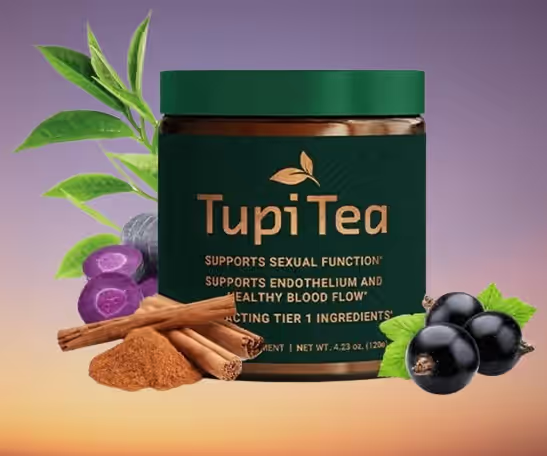Table of Contents
Have you ever witnessed butterfly pea flower tea color change right before your eyes? The first time I saw this brilliant blue liquid transform into a vibrant magenta pink with just a squeeze of lemon, it felt like watching a science experiment unfold in my teacup.
This magical beverage, also known as blue tea or Asian pigeonwings, comes from the Clitoria ternatea plant. When infused in water, the flowers create the most magnificent sapphire-blue color. However, what makes butterfly pea flower tea truly special is its ability to act as a natural pH indicator. In fact, when an acidic ingredient such as lemon juice is added, the tea dramatically shifts from deep blue to a stunning purple-pink hue. Conversely, when more alkaline ingredients are introduced, the liquid turns from blue to a vivid teal green.
Originally popular in Southeast Asia, butterfly pea flower tea has recently become one of the newest tea trends in the United States. Throughout this article, we’ll explore the fascinating science behind why butterfly pea tea changes color, how to brew it properly, and the various creative ways you can experiment with this color-changing phenomenon in your own kitchen.
What is Butterfly Pea Flower Tea?
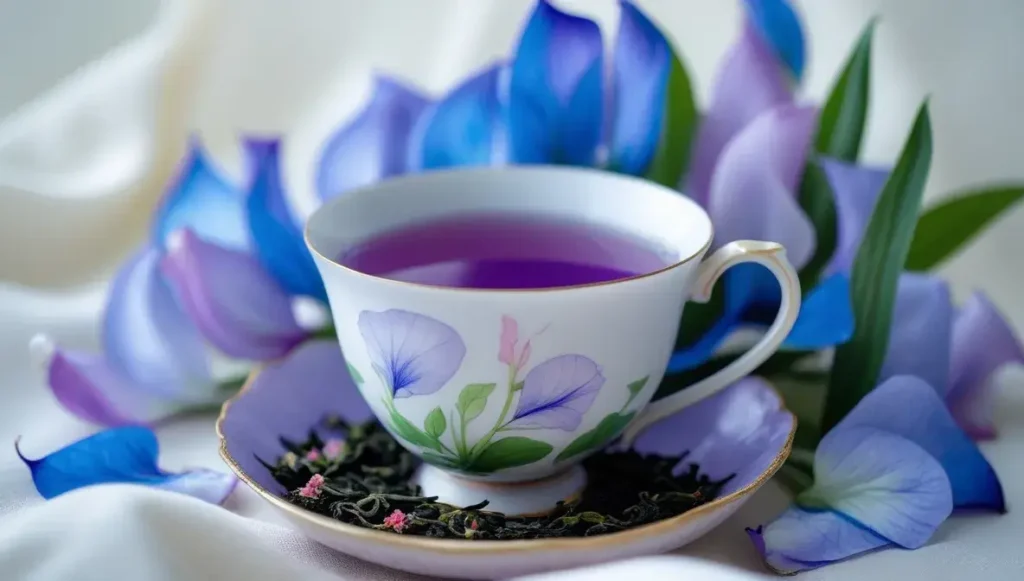
The vibrant blue elixir that’s captivating tea enthusiasts worldwide comes from a remarkable flowering plant with a fascinating history. Let me introduce you to this color-changing botanical wonder.
Origin and botanical name: Clitoria ternatea
Butterfly pea flower tea is brewed from the dried petals of Clitoria ternatea, a plant native to equatorial Asia. While many assume it originated in Southeast Asia due to its popularity there, botanical evidence points to regions around the Indian Ocean as its likely birthplace. The plant’s specific name “ternatea” comes from the Indonesian island of Ternate, where Linnaeus first obtained specimens for scientific description.
Today, this climbing plant thrives in subtropical and tropical climates worldwide. Its remarkable adaptability stems from key characteristics: drought tolerance, self-pollination capabilities, and nitrogen fixation abilities. These traits have helped Clitoria ternatea establish itself across pantropical regions globally.
Common names: blue tea, fairy tea, Asian pigeonwings
This botanical marvel goes by numerous names across different cultures:
- Butterfly Pea or Blue Pea (most common in English)
- Asian pigeonwings
- Bluebellvine
- Cordofan pea
- Darwin pea
- Fairy tea or Magic fairy tea
- Aparajita (in Indian Ayurveda)
- Anchan (in Thai)
Traditional uses in Southeast Asia
Throughout Southeast Asia, butterfly pea flower has been treasured for centuries both for its practical applications and cultural significance. In Thailand, the vivid petals naturally tint “khanom chan” – delicate layered rice flour cakes served during special occasions, symbolizing prosperity and good fortune.
The Vietnamese traditionally prepare butterfly pea tea with a squeeze of lime, transforming it from deep blue to brilliant purple-pink. This refreshing drink is offered to guests as a gesture of hospitality and respect. Similarly, in Thailand, “nam dok anchan” (butterfly pea tea mixed with honey and lemon) is a typical local beverage served after dinner or as a refreshment at hotels and spas.
Beyond beverages, the flower serves as a natural food coloring in various dishes. In Kelantan, northeastern Malaysia, it’s an essential ingredient in “nasi kerabu,” giving this traditional dish its characteristic blue hue. Meanwhile, in Burmese and Thai cuisines, the flowers are sometimes dipped in butter and fried.
The plant has deep roots in traditional medicine systems as well, particularly valued for cognitive enhancement and alleviating various ailments including fever, inflammation, pain, and diabetes.
👉 Discover the Premium Butterfly Pea Flower Tea Experience Today 👈
The Science Behind the Color Change
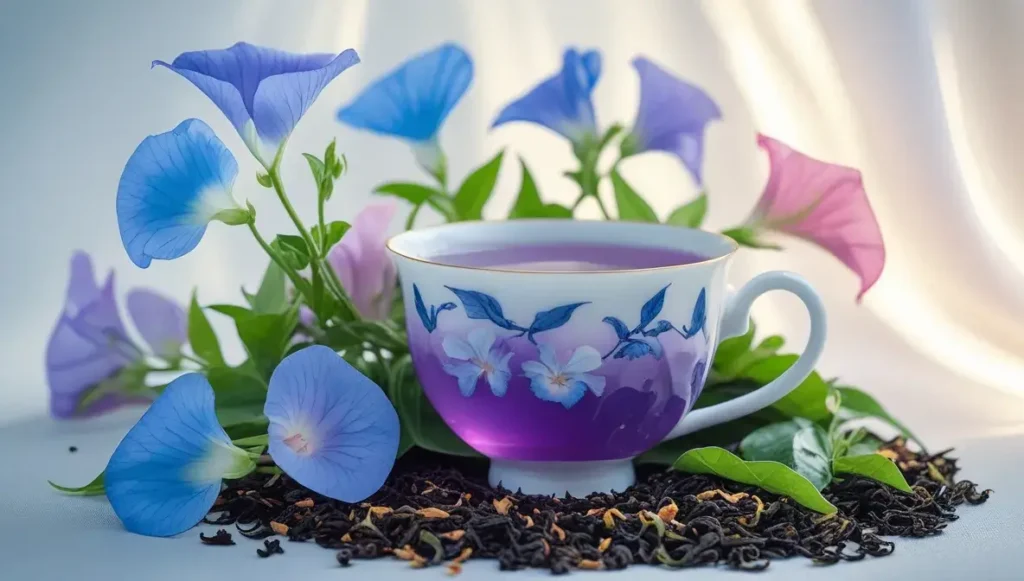
“After steeping, the infusion of butterfly pea flower can change to a spectrum of purple, violet, magenta or other variations, depending on the pH of what it is mixed with.” — Spice & Tea Merchants, Specialty tea retailer and educational content provider
The color-changing magic of butterfly pea flower tea isn’t wizardry—it’s pure chemistry at work! Let’s dive into the fascinating science behind this natural phenomenon.
What makes butterfly pea flower change color?
The secret behind butterfly pea flower’s color-changing ability lies in a group of natural plant pigments called anthocyanins. These water-soluble compounds are responsible for creating the red, purple, and blue colors we see in many plants. Essentially, butterfly pea flowers contain a special type of anthocyanin that acts as a natural pH indicator, changing its molecular structure—and therefore its color—when exposed to different pH environments.
Understanding pH and acid-base reactions
To grasp this color transformation, we need to understand pH—which stands for “potential hydrogen.” The pH scale ranges from 1 (highly acidic) to 14 (highly basic), with 7 being neutral. Acidic solutions contain more hydrogen ions (H+), while basic solutions have fewer hydrogen ions and more hydroxide ions (OH-).
Butterfly pea flower extract functions as a natural acid-base indicator across this spectrum. At pH 3-5, it displays purple colors; at pH 6-7, it shows turquoise; at pH 8-9, it exhibits yellowish-green shades. Even more specifically, solutions below pH 3 appear red, while those above pH 9 turn yellow.
Role of anthocyanins in color transformation
The main anthocyanin in butterfly pea flowers is delphinidin. This compound undergoes structural alterations as H+ and OH- concentrations change in its environment. In acidic conditions, anthocyanins form what’s called a “flavylium ion” that produces red coloration. As pH increases to neutral levels, they transform into “quinoidal bases” responsible for the signature blue color.
Unlike many anthocyanins that become colorless in neutral environments, butterfly pea’s unique acylated anthocyanins remain vibrant, making them particularly valuable as natural colorants.
Why does butterfly pea tea change color with lemon?
When you squeeze lemon into butterfly pea tea, you’re adding citric acid, which lowers the pH dramatically. Furthermore, this shifts the anthocyanin structure from its blue quinoidal form toward the red flavylium form. The transition creates that mesmerizing transformation from deep blue to vibrant purple or pink.
Additionally, the color changes aren’t limited to acids—adding alkaline substances like baking soda turns the tea green or even yellow at very high pH levels. This makes butterfly pea flower tea not just a delightful beverage but a living chemistry lesson in your cup!
How to Brew and Experiment with Butterfly Pea Tea

Ready to create your own color-changing tea masterpiece? Brewing butterfly pea flower tea is surprisingly simple, yet the results are absolutely stunning.
Basic butterfly pea flower tea recipe
Initially, all you need are dried butterfly pea flowers and hot water. For a basic brew:
- Bring water to a boil and then let it cool slightly
- Add 1-2 tablespoons of dried butterfly pea flowers to a teapot
- Pour hot water over the flowers and steep for 5-7 minutes
- Strain the flowers and enjoy the deep blue elixir
Notably, avoid boiling the flowers directly as this can make the tea chalky and bitter.
How to make butterfly pea tea change color
The magic happens when you alter the pH level. Adding acidic ingredients like lemon or lime juice transforms the blue tea into vibrant purple or pink. For the most dramatic effect, pour the yellow citrus juice first, then add the blue tea—watch as the colors change almost instantly!
Butterfly pea flower tea recipes with lemon and hibiscus
For instance, try this hibiscus-butterfly pea combination: steep equal parts dried hibiscus and butterfly pea flowers in hot water for 10 minutes. Add fresh lemon juice and sweetener to taste. This creates a delightful sweet-tart flavor with gorgeous color gradients from purple to fuchsia.
Butterfly pea tea recipe for iced drinks
Above all, butterfly pea tea shines as a refreshing cold drink. Steep the flowers in hot water, allow to cool completely, then refrigerate. Fill glasses with ice, pour in the tea, and add a squeeze of citrus. For extra flair, freeze blue tea into ice cubes to create color-changing effects as they melt.
Tips for using it in cocktails and mocktails
Coupled with sparkling water or spirits, butterfly pea tea creates show-stopping drinks. Create layered effects by pouring ingredients carefully over the back of a spoon. Experiment with other acidic mixers like pineapple juice or grapefruit for unique color transitions. The tea’s subtle earthy flavor pairs wonderfully with mint, ginger, or lemongrass for enhanced complexity.
👉 Elevate Your Senses with Top Quality Butterfly Pea Flower Tea 👈
Health Benefits and Modern Popularity
Beyond its mesmerizing color transformation, butterfly pea flower tea offers significant health benefits that have propelled it into the spotlight.
Antioxidants and potential wellness effects
Butterfly pea flowers contain a powerhouse of antioxidants, particularly anthocyanins—the compounds responsible for their vivid blue color. These antioxidants protect the body from free radicals, reducing oxidative stress and lowering the risk of chronic diseases like heart disease and diabetes. Indeed, the flowers are packed with other beneficial compounds including kaemphferol, p-coumaric acid, and delphinidin-3,5-glucoside.
Research suggests these compounds may provide several health advantages:
- Test-tube studies indicate ternatins (compounds in butterfly pea) might alleviate inflammation and potentially prevent cancer cell growth
- One study showed drinking a beverage containing butterfly pea flower extract increased antioxidant levels while reducing blood sugar and insulin levels
- The flower’s extracts may help regulate blood sugar levels in diabetic patients
Caffeine-free and stress-relieving properties
As a naturally caffeine-free beverage, butterfly pea flower tea offers a gentle alternative for those seeking to reduce caffeine intake. Moreover, it contains adaptogenic properties that help the body manage stress by balancing cortisol levels.
Many users report its calming effects help reduce anxiety and promote relaxation—making it an ideal evening drink. According to some sources, the tea’s soothing qualities may even improve sleep quality, although research suggests it’s not as effective as chamomile in this regard.
Why it’s trending in the West
In recent years, butterfly pea flower has experienced a surge in popularity across Western markets. This trend stems largely from increasing awareness of its potential health benefits combined with its Instagram-worthy appearance. The Grand View Research report notes that younger consumers especially value “visually appealing and Instagram-worthy food and beverages”.
Another major factor in its growing popularity: in 2021, the FDA approved butterfly pea flower extract as a color additive for various food products. Accordingly, this approval has expanded its commercial applications substantially.
Use as natural food coloring and butterfly pea flower liqueur
The FDA approval allows butterfly pea extract to be used in numerous products including sports drinks, fruit drinks, alcoholic beverages, gums, candy, ice creams, and yogurt. In 2023, this approval was further expanded to include ready-to-eat cereals, crackers, snack mixes, and various chips.
Within the spirits world, butterfly pea has made a splash—most notably in 2015 when Australia’s Husk Distillers launched Ink Gin, “the world’s first color-changing gin”. This stunning indigo spirit transforms to pink when mixed with tonic, creating cocktails that are both visually striking and delicious.
Conclusion: Embracing the Wonders of Butterfly Pea Flower Tea Color Change
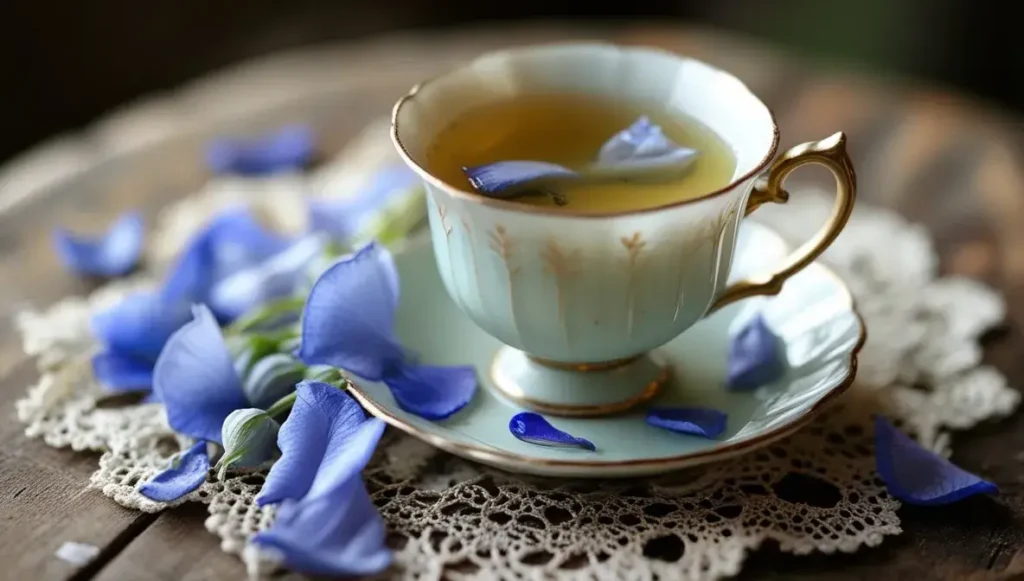
Butterfly pea flower tea certainly stands as one of nature’s most fascinating beverages. We began our journey exploring this remarkable plant’s Southeast Asian origins and watched as science explained the anthocyanin-driven magic behind its stunning color transformations. The simple addition of lemon juice creates a dramatic shift from sapphire blue to vibrant pink – a chemistry experiment right in our teacups!
The versatility of this botanical wonder extends far beyond a simple cup of tea. Home bartenders and professional mixologists alike now create layered cocktails with mesmerizing color gradients. Food manufacturers have embraced butterfly pea extract as a natural blue food coloring, therefore eliminating the need for artificial alternatives.
Health benefits add another dimension to this already impressive plant. Packed with antioxidants and free from caffeine, butterfly pea tea offers more than just visual appeal. Many people enjoy its stress-relieving properties and potential wellness effects, making it both beautiful and beneficial.
My own experience witnessing that first magical color change mirrors countless others who have discovered this botanical treasure. Altogether, butterfly pea flower represents a perfect blend of ancient tradition and modern appreciation. The next time you seek a beverage that delights both eyes and palate, remember the humble blue flowers that undoubtedly create one of nature’s most enchanting drinks.
Whether you brew it hot, serve it iced, or use it as a base for creative concoctions, butterfly pea flower tea rewards experimentation. The science may explain the color change, but the joy comes from watching this natural phenomenon unfold right before your eyes. Overall, this blue botanical wonder deserves a place in any kitchen where beauty and function harmoniously meet.
👉 Try the Best Butterfly Pea Flower Tea for Stunning Color Change 👈
Key Takeaways
Discover the fascinating science and practical applications behind butterfly pea flower tea’s mesmerizing color-changing properties:
- Butterfly pea tea’s color change is caused by anthocyanins that act as natural pH indicators, shifting from blue to pink with acid.
- The tea is caffeine-free and rich in antioxidants, offering potential health benefits including stress relief and blood sugar regulation.
- Basic brewing requires just dried flowers and hot water; add lemon juice to create the dramatic blue-to-pink transformation.
- FDA approval in 2021 made butterfly pea extract a legal natural food coloring for commercial beverages and food products.
- Perfect for Instagram-worthy cocktails and mocktails, creating layered color effects that captivate both eyes and taste buds.
This ancient Southeast Asian botanical wonder combines traditional wellness practices with modern mixology, making it both a healthy beverage choice and an entertaining conversation starter for any gathering.
FAQs
Q1. How does butterfly pea flower tea change color? Butterfly pea flower tea changes color due to anthocyanins, natural compounds that act as pH indicators. When acidic ingredients like lemon juice are added, the tea transforms from blue to purple or pink as the pH level changes.
Q2. What are the health benefits of butterfly pea flower tea? Butterfly pea flower tea is rich in antioxidants, which may help reduce oxidative stress and lower the risk of chronic diseases. It’s also caffeine-free, potentially stress-relieving, and may help regulate blood sugar levels.
Q3. How do you brew basic butterfly pea flower tea? To brew basic butterfly pea flower tea, steep 1-2 tablespoons of dried butterfly pea flowers in hot water for 5-7 minutes. Strain the flowers and enjoy the deep blue infusion.
Q4. Can butterfly pea flower tea be used in cocktails? Yes, butterfly pea flower tea is excellent for cocktails. It creates stunning layered effects and color-changing drinks when mixed with acidic ingredients. It pairs well with various spirits and mixers, offering both visual appeal and subtle flavor.
Q5. Is butterfly pea flower extract approved for use in food products? Yes, in 2021, the FDA approved butterfly pea flower extract as a color additive for various food products, including beverages, candies, and dairy products. In 2023, this approval was expanded to include more food items like cereals and snacks.
👉 Experience the Top Rated Butterfly Pea Flower Tea Like Never Before 👈
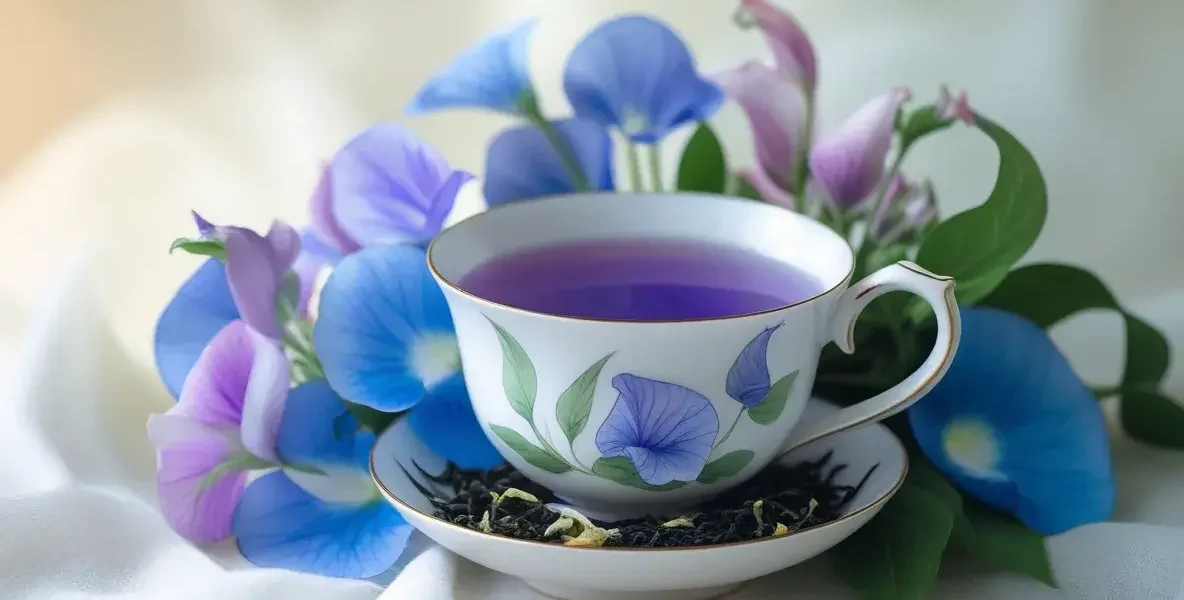








![Jasmine Tea vs Green Tea Benefits: Which Gives Better Health Results? [2025] jasmine tea vs green tea benefits](https://www.goteaworld.com/wp-content/uploads/2025/09/jasmine-tea-vs-green-tea-benefits-150x150.webp)



